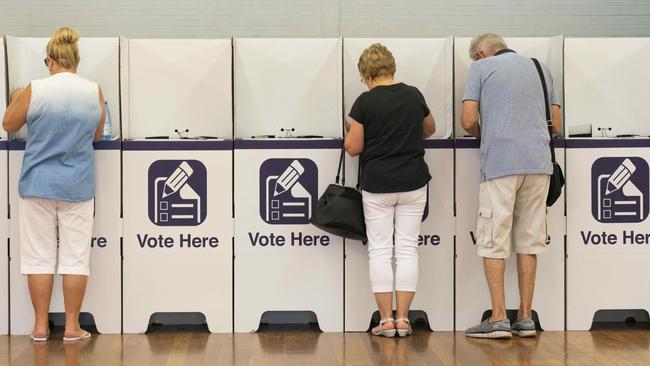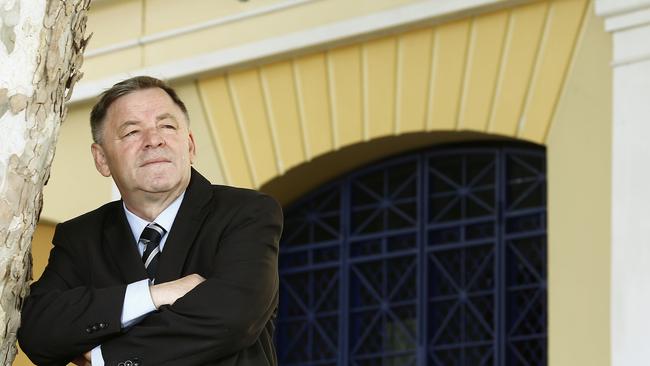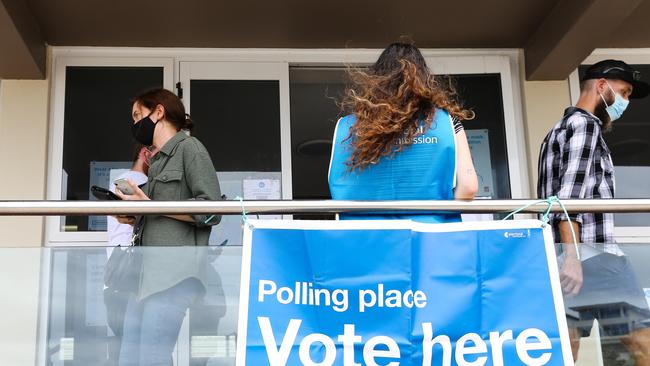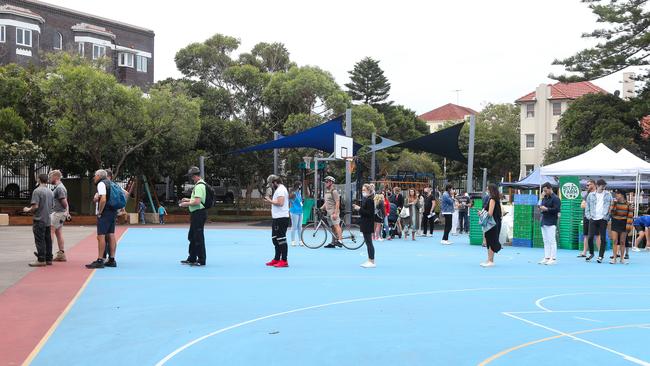NSW council elections: Informal voting count begins with record highs
Record high informal votes could swing council elections with some councillors fearing Covid restrictions has led to voter confusion and apathy.
Southern Courier
Don't miss out on the headlines from Southern Courier. Followed categories will be added to My News.
Large numbers of informal votes from last week’s local government elections will begin to be added to the final count in a move that could determine some of the tightest election battles in councils across the state.
High rates of informal votes have emerged as one the defining features in initial results from the December 4 election with more than half of Sydney’s councils currently recording informal voting percentages above 10 per cent.

Rates are particularly high in Sydney’s west and southwest including Cumberland where the informal vote currently sits at 18.5 per cent – up from 6.8 per cent at the previous election.
The NSW Electoral Commission has indicated the rates could start to fall over the next week as it begins to tally eligible ballot papers originally cast as informal/other because they were unmarked or filled out incorrectly.
The commission said votes that would be considered in a ‘check count’ include ballots where voters marked both above and below the line.
Some candidates have suggested the high informal rates could be down to factors such as voter confusion, a general disinterest in the election or residents choosing to ‘donkey vote’.
In the eastern suburbs of Sydney, the Liberals have put in an official complaint to the electoral commission after one in four votes at a key booth were designated informal.

Bayside mayor Bill Saravinovski believes Covid protocols that banned candidates from handing out election material 100m from polling booths was a leading factor.
“In the past we were allowed to talk to voters, show them how to vote correctly – even if it wasn’t for us – but this time we were restricted to what we could do,” he said.
“Particularly for a council like Bayside where a significant percentage of our population is from non-English speaking backgrounds that’s made a difference.
“It’s strange you can go to a rock concert and as long as you’re 1.5m away from another person it’s fine but at an election we had a 100m rule. That’s led to a lot of the confusion.”

Canterbury-Bankstown mayor Khal Asfour said the counting of informal votes could play an important role in determining the final election outcome in the council which currently has the second highest informal voting rate in Greater Sydney.
“We have a large culturally diverse population and to be honest a lot of voters were unsure of how to vote which was made worse because of all the Covid restrictions,” he said.
“The 100m restriction was a silly rule and it didn’t stop anyone from catching Covid – instead it disenfranchised a lot of people who didn’t know how to vote.
“I’m hoping the informal rates will drop dramatically over the next week but until they press that button we won’t know exactly what the final rate will be and who’s been elected.”

The NSW Electoral Commission said the initial count of first preferences had been published online to give candidates and the public “an indication of the likely outcome”.
A spokeswoman said the informal figure reported in the initial count could be attributed to counting policy requiring polling staff on election night to place councillor ballot papers marked both above and below the line into the ‘others/informal’ pile.
The commission said candidates can expect informal results to be added to the results over the coming week.

“Where an elector has voted both above and below the line on the councillor ballot paper and both sections are formal, the below the line section takes precedence,” the commission said.
“If the below the line section is informal, the above the line section will be considered if formal.”
Sitting Randwick councillor Anthony Andrews, who is one of two candidates vying for a final seat in his council ward, said the large number of informal votes could determine his chances of being re-elected.
Mr Andrews, who has been critical of the management of the election, is now considering joining a class-action suit proposed by at least three other candidates across Sydney to challenge the election outcome depending on the final result.

“There was a lot of confusion about where you could hand out material, where you couldn’t and every booth had a different interpretation of what 100m was – for some it was 100m from the polling hall and at others it was 100m from the fence.
“The whole handling of the election was chaotic and it’s made a huge difference for voters and to the results.”
Cumberland Council candidate Nadima Kafroni-Saba is among many candidates eagerly awaiting the final result of the poll to know if she’s been elected.
She said the current high informal rate in the local government area was concerning.
“Unfortunately we did have some people walk into the polling booths saying there’s no point in voting and they were just there because they wanted to avoid the fine,” she said.
“I understand why the Covid restrictions were in place but I’m just hoping the final outcome is representative and doesn’t disadvantage voters or stop their voices from being heard.”
INFORMAL VOTING RATES
Below is the list of greater Sydney councils showing the informal/other vote, as of Monday morning.
- Cumberland – 18.5%
- Canterbury-Bankstown – 16.6%
- Blacktown – 16.4%
- Bayside – 15.8%
- Camden – 15%
- Liverpool – 14.7%
- Campbelltown – 14.4%
- Georges River – 14%
- Fairfield – 13.2%
- Strathfield – 13%
- Parramatta – 12.1%
- Ryde – 11.9%
- Willoughby – 10.8%
- Ku-ring-gai – 10.2%
- Penrith – 10%
- The Hills – 9.8%
- Randwick – 9.8%
- Hornsby – 9.4%
- Sutherland – 9.4%
- Canada Bay – 9.3%
- Burwood – 8.7%
- Waverley – 8.3%
- Northern Beaches – 8%
- Lane Cove – 7.8%
- Hunters Hill – 7.7%
- Woollahra – 7.3%
- Inner West Council – 7.2%
- Mosman – 6.8%
- North Sydney – 6.5%





